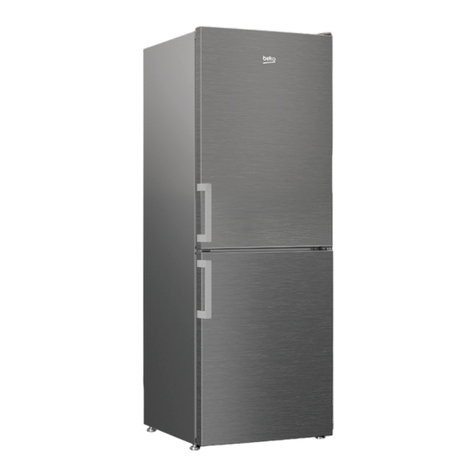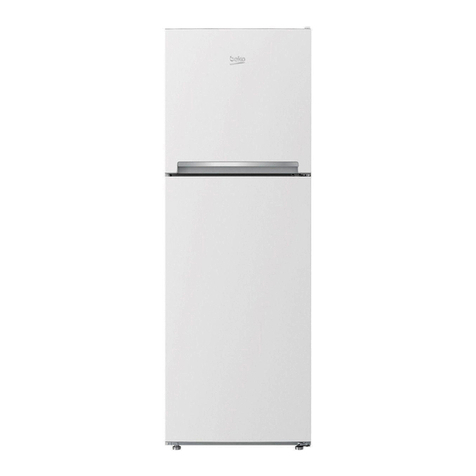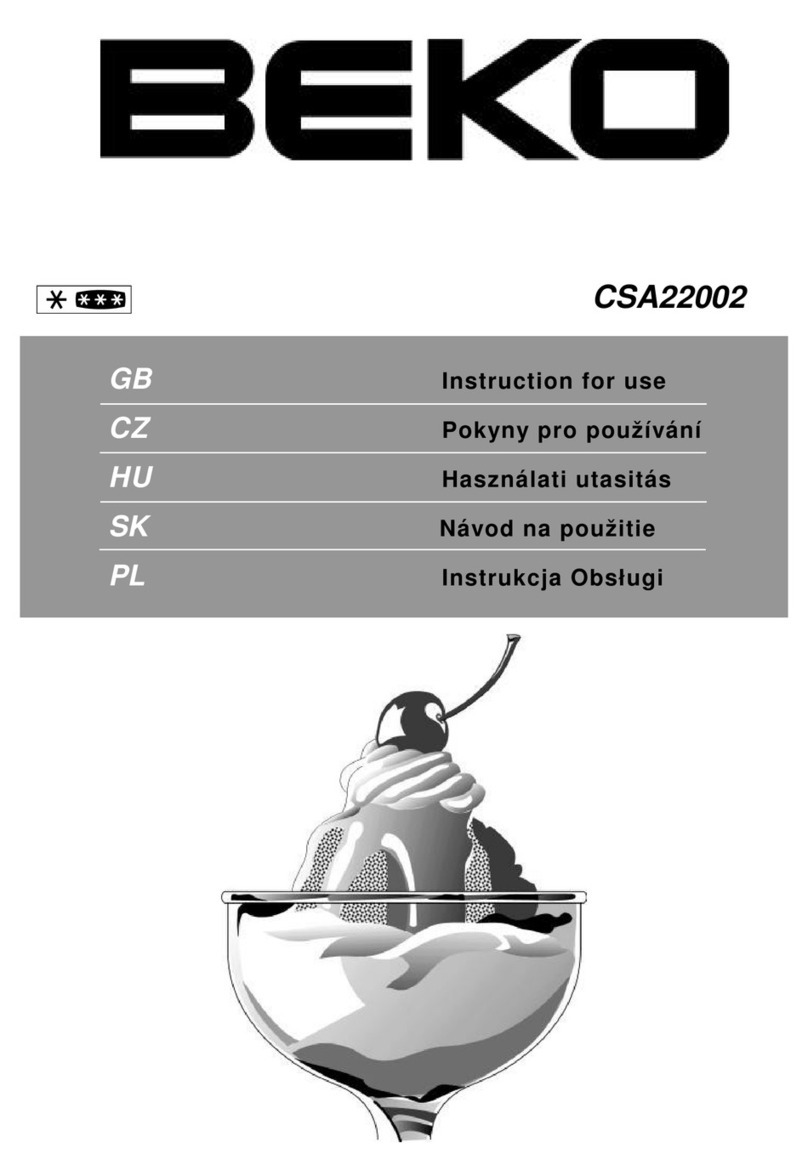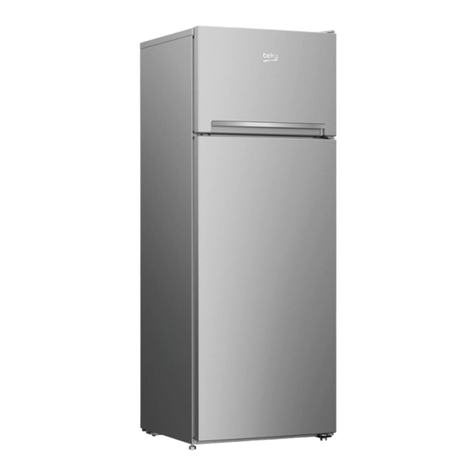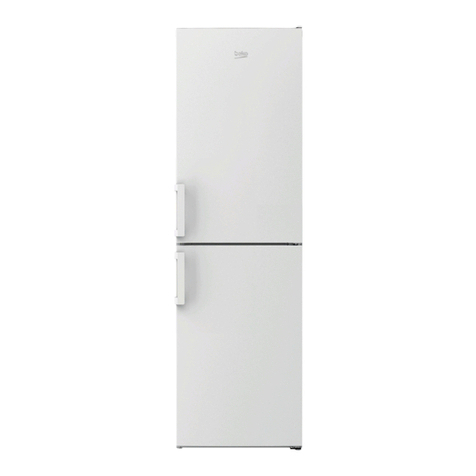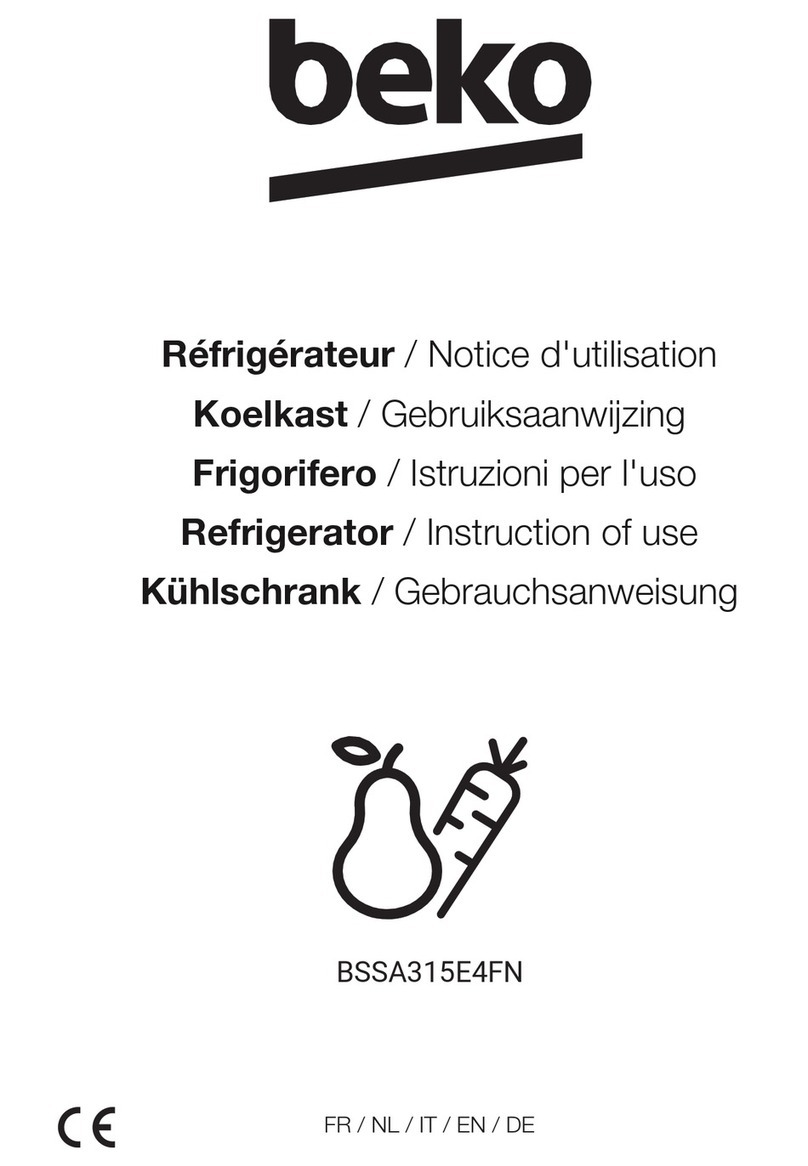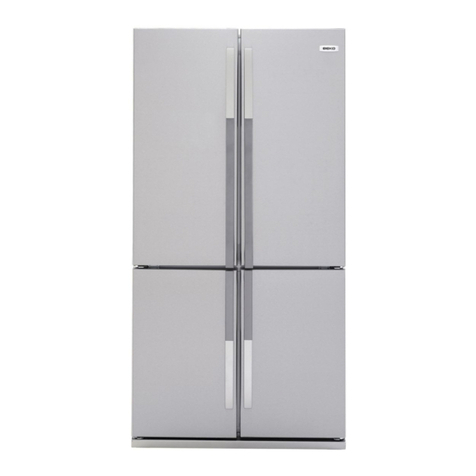WARNING!
In order to ensure a normal operation of your refrigerating appliance, which uses a completely environmentally friendly
refrigerant the R600a (flammable only under certain conditions) you must observe the following rules:
Do not hinder the free circulation of the air around the appliance.
Do not use mechanical devices in order to accelerate the defrosting, others than the ones recommended by the
manufacturer.
Do not destroy the refrigerating circuit.
Do not use electric appliances inside the food keeping compartment, other than those that might have been
recommended by the manufacturer.
ADVERTENCIA !
Para asegurarse del funcionamiento normal de vuestro refrigerador, conteniendo le refrigerante R600a que contribuye a la
protección del ámbito (inflamable sólo en ciertas condiciones), le conviene a respectar las reglas siguientes :
No impide la circulación del aire alrededor del aparato.
No utilize utensilios mecánicos o otros dispositivos para acelerar el proceso de descongelación otros de los
recomendados por el fabricante.
No cause daño al circuito refrigerante.
No utilize aparatos eléctricos en el interior de los compartimentos de la conservación de los alimentos, si estos no están
conformes con el tipo de aparato recomendado por el fabricante.
ATTENTION!
Pour assûrer un fonctionnement normal de votre appareil qui utilise un agent frigorifique complètement écologique, R600a
(infammable seulement dans certaines conditions) vous devez respecter les règles suivantes:
N’empêchez pas la libre circulation de l’air autour de l’appareil.
N’ utilisez pas des dispositifs mécaniques pour accélérer le dégivrage, autres que ceux récommendés par le fabriquant.
Ne détruissez pas le circuit frigorifique.
N’utilisez pas des appareils électiques à l’intérieur du compartiment pourconserver les denrées, apart celles qui sont
éventuellement récommendés par le fabriquant.
WARNUNG!
Ihr Gerät verwendet ein umweltverträgliches Kältemittel, R600a (nur unter bestimmten Umständen brennbar). Um einen
einwandfreien Betrieb Ihres Gerätes sicherzustellen, beachten Sie bitte folgende Vorschriften:
Die Luftzirkulation um das Gerät darf nicht behindert sein.
Verwenden Sie außer der vom Hersteller empfohlenen, keine mechanischen Hilfsmittel, um den Abtauprozess zu
beschleunigen.
Der Kältemittelkreislauf darf nicht beschädigt werden.
Verwenden Sie im Lebensmittelaufbewahrungsbereich Ihres Gerätes keine elektrischen Geräte, es sei denn, sie sind
vom Hersteller empfohlen.
УВАГА!
Для того, щоб забезпечити нормальну роботу Вашого холодильника, в якому використовується охолоджуючий
реагент R600a, абсолютно нешкідливий для навколишнього середовища (займається лише за певних умов), Вам
Необхідно дотримуватися наступних правил..
Не створюйте перепон для вільної циркуляції повітря навколо холодильника.
Не користуйтесь жодними механічними пристроями та інструментами для видалення льоду під час
розморожування холодильника, окрім тих, що рекомендовані виробником.
Не допускайте пошкодження охолоджуючого контура.
Не встановлюйте всередину холодильного відділення, де зберігаються продукти, жодних електричних пристроїв,
окрім тих, що рекомендовані виробником.
ВНИМАНИЕ
Для того, чтобы обеспечить нормальную работу Вашего холодильника в котором используется охлаждающий
реагент R600a, совершенно безвредный для окружающей среды (воспламеняющийся только в определенных
условиях), Вам следует соблюдать следующие правила.
Не создавайте препятствий для свободной циркуляции воздуха вокруг холодильника.
Не пользуйтесь никакими механическими приспособлениями и инструментами для удаления льда при
размораживании холодильника, коме тех, которые рекомендованы изготовителем.
Не допускайте повреждения охлаждающего контура.
Не устанавливайте внутрь холодильного отделения, где хранятся продукты, никакие электрические устройства,
кроме тех, которые рекомендованы изготовителем.
PARALAJMËRIM!
Për të siguruar një përdorim normal të frigoriferit tuaj, që përdor një mjet ftohës plotësisht ekologjik, R600a (i ndezshëm
vetëm në kushte të veçanta), duhet të ndiqni rregullat vijuese:
Mos pengoni qarkullimin e lirë të ajrit përreth aparatit.
Mos përdorni sende mekanike që nuk janë rekomanduar nga prodhuesi, për ta përshpejtuar shkrirjen e akullit.
Mos e prishni qarkun ftohës.
Mos përdorni aparate elektrike të parekomanduara nga prodhuesi brenda dhomëzës për mbajtjen e ushqimeve.
